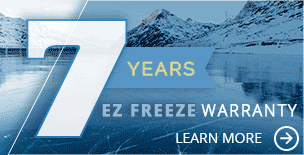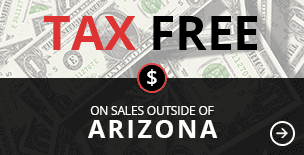Please view the below video for information on how to receive your new appliance from Warehouse Appliance.
Q. “My order is shipping via freight truck; what should I look for when it gets here?”
A. Please note that freight shipments are delivered “curb-side”, meaning that the driver is only responsible for delivery of the shipment to the property – not to the garage, or inside the location. Unfortunately, there are a lot of things that can happen between the manufacturer and your delivery location; therefore we are asking you to do a very small amount of work to protect yourself, and us.
We strongly recommend inspecting the shipment prior to signing the delivery receipt, but some still do not do so; to ensure that you are receiving what you ordered, and in acceptable condition, the National Claims Council Regulations specify that you must inspect, examine, and inventory your shipment, as it is unloaded.
- On arrival, inspect the shipment immediately for obvious signs of damage. Any and all shortages and damages must be written on the Bill Of Lading or Freight Bill. Should you determine that any items are damaged or missing, you MUST note the item, the discrepancy, and the condition before you sign it! Then call the freight company to report any problems.
- You should open cartons and containers. If there is the slightest doubt that the merchandise is damaged (concealed or not) it must be noted on the Bill Of Lading or Freight Bill, or the liability to prove that the delivering carrier did the damage becomes your responsibility.
- Do not be pressured or intimidated by the driver. They cannot leave until the Bill Of Lading or Freight Bill is signed (regardless of how much in a hurry they are or how late they are). The carrier’s driver should help you receive your shipment and answer your questions. While your driver is there, compare the pieces of freight you are receiving to your carrier’s freight bill. When you’ve determined that the condition and quantity of your freight is acceptable, you can then sign the delivery receipt. The driver will provide you with a copy, taking the signed copy with them (as a delivery receipt). If one is not offered, request one, as is your right. The Bill Of Lading or Freight Bill is the only documentation of the condition of a shipment when it arrives at your location, and without this document, we cannot hold others accountable for items damaged or missing.
Q. “When should I sign for the shipment?”
A. Your signature on the delivering carrier’s freight Bill Of Lading (BOL) constitutes acceptance of the merchandise “as is” and in good order. If you do not inspect before signing you are, for all practical purposes, waiving the right to collect on a damage claim even if the damage is discovered later (known as concealed damage). So, you should only sign for the shipment once you are satisfied with the condition of the shipment.
Q. “What if the shipment arrives damaged?”
A. If the box, crate, or merchandise is visibly damaged, refuse the delivery and contact us immediately to request a Return Authorization number so the merchandise can be shipped back to its origin at no charge. Please also notify us of the situation as quickly as possible so we can follow-up on our end to assist with any required procedures. Please be aware that, as a shipment is technically the property of the consignee once it is loaded onto a freight truck, it is the consignee’s responsibility to pursue a damage claim for replacement or compensation.
Q. What is concealed damage?
A. Concealed damage is damage which you did not notice when you first accepted your shipment or was hidden from your sight.
Q. “What if I don’t see any damage until after the freight driver has left and I have signed the BOL?”
A. This must be reported immediately. If the consignee has signed for the shipment indicating there was no damage noted at time of receipt, the consignee would then have to take up their claim with the freight carrier if concealed damage becomes apparent after receipt. Many people order products in advance of need, and wait until it is to be installed to finally check the condition of the product (sometimes weeks or even months have passed); in these situations, it is the consignee’s sole responsibility to contact the freight carrier and pursue a claim.
In the event of concealed damage, it is vital that you immediately document and photograph (if possible) the packaging and the damage. You must keep the packaging. Do not move the item, but call the carrier and report the damage. They will begin a concealed damage claim and ask for an inspection. You must also notify us so that we are aware of the situation and can be of assistance if required. The inspector will determine if the damage was possibly carrier caused.
Remember: in cases of concealed damage, you signed the document saying everything was OK; a report and a claim must be filed with the carrier immediately – the sooner concealed damage is discovered and reported, the better.
Q. “What if I have my neighbor sign for me because I am unable to be there for the delivery?”
A. If you have someone signing the freight bill for you, for whatever reason, they are acting as your representative; you should inform them that they should check for damaged items. If the freight is signed for without notating damaged or missing pieces – regardless of whether you or your representative signed for it – it is quite difficult to get the freight companies to take responsibility.
Q. “Will you replace my order if it is delivered damaged and I sign for it?”
A. We cannot be held responsible for freight damage that was signed for; we will help you deal with the freight company, but you must call the freight inspector and you must file the claim. Ultimately, it is the Freight Company’s responsibility to deliver the shipment in good condition, and it is the consignee’s responsibility to inspect and sign for the products and notate any damage.
Q. “If I order a very heavy item, will the freight driver deliver to wherever I need it on the premises?”
A. In short, no. The freight carrier’s responsibility is to deliver within the property line; once it has been delivered to the address supplied, and the Delivery Receipt has been signed, the driver has fulfilled their obligation. Freight will be unloaded at the delivery site immediately adjacent to the delivery vehicle only.
Q. “Will the freight driver take the shipment off of the truck for me?”
A. The freight truck driver is only responsible for getting the shipment to the delivery site (please note that the shipment will be delivered only tothe property – not into the garage, or inside the location); if there are no means to remove the shipment from the truck at the delivery site and you did not have a liftgate service scheduled, the shipment may be returned to the freight carrier hub, where a different truck may be assigned for the delivery, which will incur additional costs that are the consignee’s responsibility. If a lift gate was requested at the time the order was placed, then the shipment will be removed from the truck by the driver. However, if no lift gate was requested in advance, they are not automatically supplied. If delivery is attempted without the means to remove the shipment from the truck, you will be responsible for return freight charges and any storage fees incurred. The best way to avoid this is to request a lift gate when the order is placed, listed as an option for a nominal fee on the page where the item(s) were ordered.





